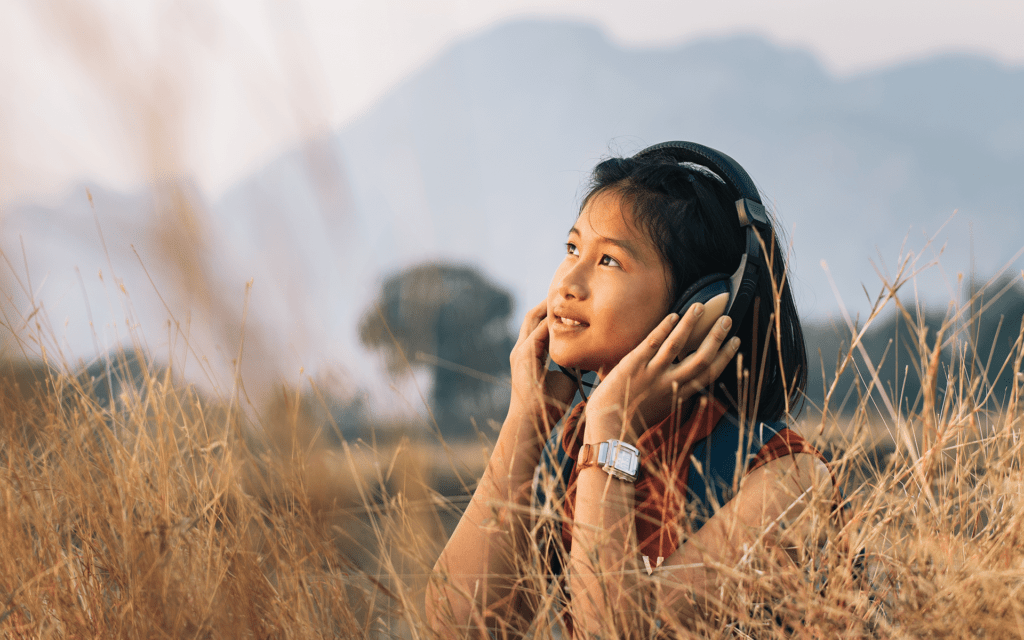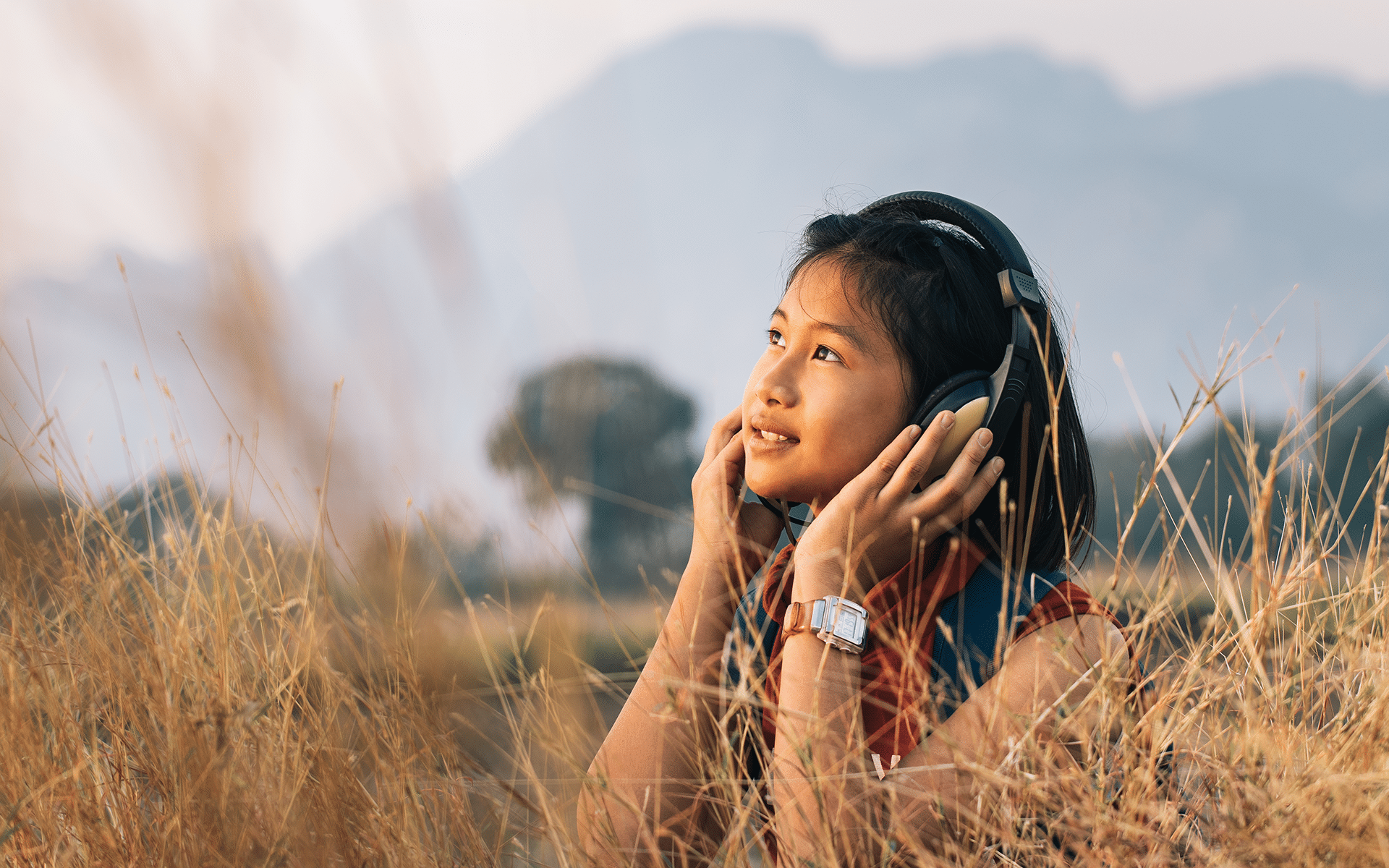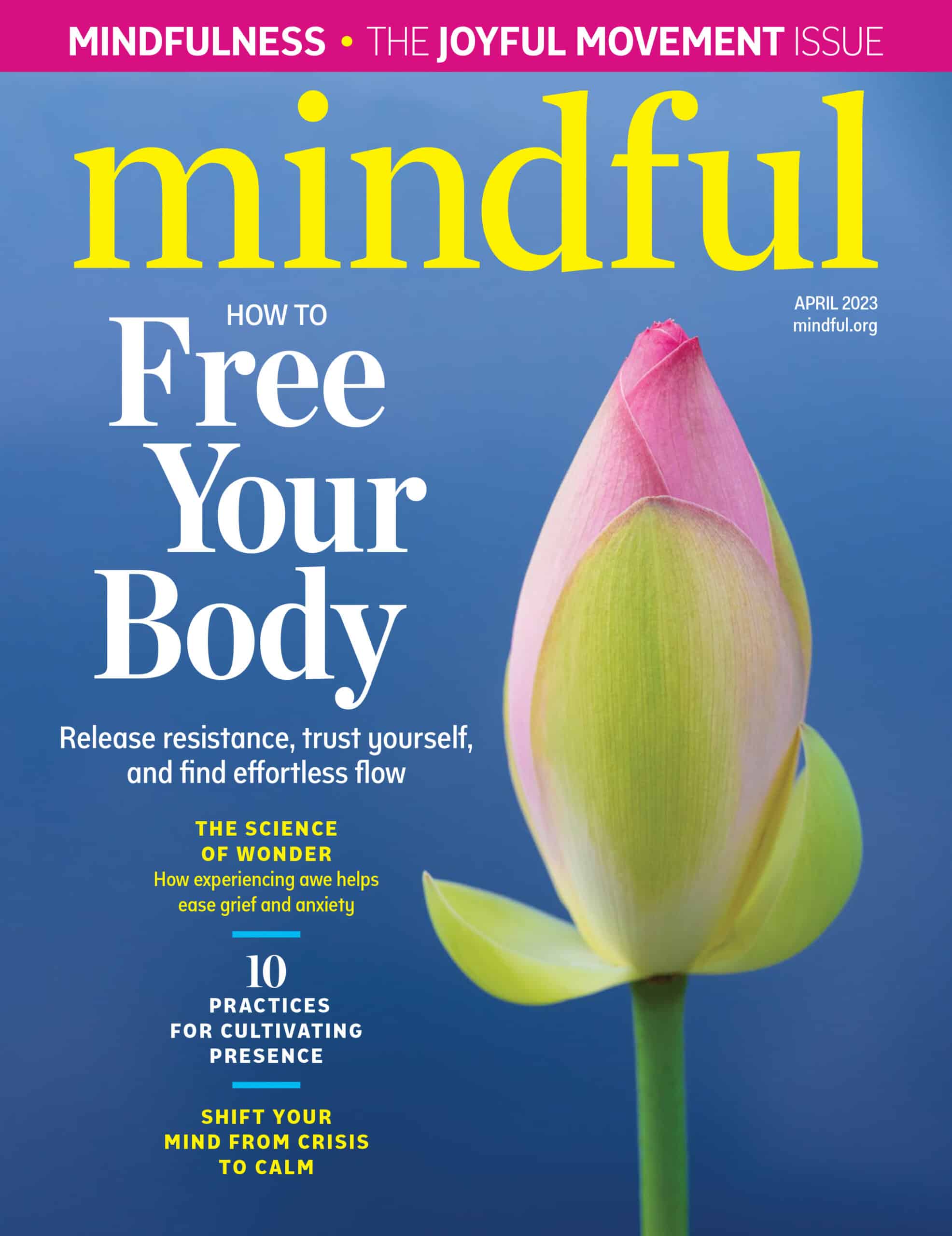12-Minute Meditation: A Guided Sound Practice for Present-Moment Awareness
In this guided meditation, notice the sounds around you, then use them as an anchor to check in and release tension. The post 12-Minute Meditation: A Guided Sound Practice for Present-Moment Awareness appeared first on Mindful.

In this guided meditation, notice the sounds around you, then use them as an anchor to check in and release tension.
By Charisse Minerva October 13, 2023 Calm Adobe Stock/ krumanop-1
Adobe Stock/ krumanop-1Sounds are a constant feature of life. So much so that we often take them for granted. So let’s go on a sound excursion. You may like to crack a window to let the sounds from outside in. If you can’t do that, it is quite all right because we can still hear sounds inside with the windows closed.
I approach mindfulness practice by designing lessons that are user-friendly and engaging. I want to open a path for many to enter, deepening their practice naturally as they continue their journey of discovery.
A Guided Sound Meditation
12-Minute Meditation: A Guided Sound Practice for Present-Moment Awareness with Charisse Minerva
Please get into a comfortable position—not so comfortable that you fall asleep, but comfortable enough that your awareness can grow. You can have your eyes closed, and if that doesn’t work for you, just lowering the gaze will be fine. It’s just so that we remove the distraction of eyesight and we actually use other senses to see. Now, we’ll breathe. If focusing on breathing tends to cause some stress, I invite you to focus on other parts of the body, like the feet or the hands, or at any point, just crack the eyes open and look to see where you are in the here and now. So let’s get started. Let’s allow our breath to normalize. Usually when we first start noticing our breath, it gets a little awkward but in just a few moments, it’ll gradually fall into its own natural pattern. You might as well take this time and, if you can, notice your heart rate. Is it fast? Is it slow? Notice your breathing rate, and notice whether or not your palms are dry or sweaty. Later on at the end, we’ll come back and check that again. I’m going to ring a bell to get us started. Listen to the sound of the bell gradually fall off and diminish. Settle in and listen as the sound of the bell goes away. What sounds from the room you’re in do you hear? Could it be a fan or overhead like a ceiling fan? Or maybe you have the fan from an AC unit or a heater. Maybe there’s a hum of a small machine or the refrigerator. And if there’s no sound, it’s the sound of silence. Let’s see if we can find three separate sounds just in the room we’re in. If you don’t find them it’s quite alright it’s the exploration that is actually the benefit. It isn’t finding the sound, it’s looking for the sound. You don’t have to struggle with it. You can look around with your senses or just see what comes to you. What do you notice that’s there? Sometimes I have heard this called receiving the sound. Next, let’s branch out to another part of the building, outside of the room that you’re sitting in, another part of the house. If you’re in an apartment building, the other apartments, other floors. Perhaps you hear people talking, a TV, a computer, someone washing dishes, or a dishwasher. Let’s look for three to five sounds as if we’re in a larger space than just the room. Again, it’s a curiosity exploration, and there is no grade here. There’s no pass or fail. It’s just seeing what’s there. And perhaps you might even find a sound that you hadn’t noticed before because you’re paying attention. Remember to breathe, relaxing from the feet, up to the belly, to the top of the head. Letting the breath nourish as we listen. Now we’re going to explore a little further. We’re going to open up our sound awareness even further and go outside the building. This is where the cracked window helps, but like I said, it is quite all right if you don’t have a cracked window. Let’s listen outside the building. Maybe one of the first things you hear is birds, or cars passing, children playing, someone cutting the grass, or someone walking on gravel, a dog barking, a cat purring, the wind. Is there something new that you noticed that you hadn’t heard before? Again, let’s look for three to five sounds. No problem if there’s no sound heard. It’s the listening, it’s that sense of reaching out beyond the body, that the senses do not stop at our skin, they continue outward. In fact, once you’ve found the closest sound, I invite you to try expanding your circle of sound awareness, gradually increasing the distance. I hear a bird in the bush by my house, so let me see if I can hear a bird across the street. Then let me see if I can hear a bird in the next block, two blocks away, three blocks away, or a plane overhead. I hear it coming in the distance. It gets louder and louder and louder and gradually falls away, kind of like a bell. It is so interesting how we can hear sounds from so far away. Sometimes I play a game in the city when I am in the middle of downtown. I sit and I close my eyes to see if I can hear birds. And it’s that listening. Sounds are there if we listen for them. Were you able to find three to five sounds? Good for you for the effort. Now, let’s gradually bring our attention back from the outside to the building. From the building, to the room. And once we’re back in the room, we can turn our attention toward our bodies. :Let’s go inside our bodies. What can we hear inside? We can hear the sound of us breathing, swallowing. If we just ate food, we can hear our stomach gurgling as it’s digesting food. Sometimes we can even hear our heartbeat. Although, with the heartbeat, I think sometimes it’s as much felt as it is heard. Now that you’re inside your body, let’s see if we can find three sounds. You may find this a little more difficult. I have a question for you. When you were doing this sound exploration, did you find yourself leaning toward pleasant sounds? Because life isn’t all pleasant sounds. A police siren could be very unsettling, or it could be pleasant. It depends on our own situations. When you hear an unpleasant sound, what do you do? Do you clench anywhere in your body? Do you grit your teeth? Do you have to press down on the floor? Have you ever even noticed that? Do you tighten your biceps? I’m going to do a quick experiment with you. I’m going to play some instruments and I’m going to play them in a way that is a bit disruptive. I want you to explore what happens to your body. Does your heart rate change? Does your breath change, or your palms get more wet? Is there a part of your body that might tighten up? Just see. How does my body react when I hear sounds that are not pleasant? You may find that what you have just found out about yourself, what your body does when it hears an unpleasant sound, is what happens when you are in situations of stress. So if that’s the case and you feel your body tightening up in the same way it did with these unpleasant sounds, you can start to learn how to breathe into that so that in those situations, you can breathe through that stress, breathe through that tension, breathe through what’s bringing that anxiety. In these last few minutes I’m going to give you the chance to go to whichever level of sound awareness you would like to explore. Internal, the room, the building, outside. What works for you? Where do you like to hear sound? And it may be a combination. While you’re listening, notice your body sensations. Breathing. Letting the energy settle. Listening to sounds with the whole body, the whole sense of awareness. Let’s take three deep breaths. When you’re ready, open your eyes if they were closed. Gently stretch and move your body if it feels good. Thank you so much for spending time with me.GROW YOUR MEDITATION PRACTICE
Get practices, tips, and special offers delivered straight to your inbox
Phone
This field is for validation purposes and should be left unchanged.
About the author
Charisse Minerva
Charisse Minerva has facilitated Mindfulness with schools, counselors, arts organizations, athletes, businesses, educators etc., She was Core Faculty for Inward Bound Mindfulness Education(iBme) Teacher Training program and developed the UK iBme Mindfulness Teen Retreat program. She’s a guest instructor for the Univ of Virginia Contemplative Sciences Center(CSC). Minerva taught the Hampton Roads VA Sattvic Center Dance Drum and Mediation (DDM) program and ran multiple A Taste of Mindfulness conferences. She was the Mindfulness Coordinator at Virginia Beach Friends School, teaching and designing curriculum from age 4 through high school. For the past 3 years she has worked with WholeSchool Mindfulness (WSM), which puts Mindfulness Directors throughout the U.S. in schools K-University. She oversees Community & Professional Development. Charisse Minerva was just awarded a two-year fellowship at the prestigious New York Garrison Institute for Contemplative Sciences. She is also a budding multimedia Creative, Minerva Trueheart, using music, rhythmic verse, storytelling, and percussions to share Mindfulness & Contemplation on social media. You can find her work at TrueHeart.co and on her youtube channel Minerva Trueheart.
GROW YOUR MEDITATION PRACTICE
Get practices, tips, and special offers delivered straight to your inbox
This field is for validation purposes and should be left unchanged.

 Kass
Kass 






























_1.jpg)


